Image Credit: Image #1: Energy Vanguard
Image Credit: Image #1: Energy Vanguard A site boundary for a zero energy building must be defined to determine what energy is imported and what is exported.
Image Credit: Images #2 and #3: U.S. Dept. of Energy The table of source energy conversion factors shown here is from the DOE document, A Common Definition for Zero Energy Buildings, with the numbers coming originally from ASHRAE Standard 105.
A few weeks ago, I wrote about whether homes that produce as much energy as they use should be called net zero energy or zero net energy homes. Several readers offered up another choice: zero energy homes.
I’ve also written in the past about four different ways to define net zero energy (the term I’ve preferred). Now, the U.S. Department of Energy (DOE) has weighed in on both of these debates. Do you know what they decided?
The name
The name of the DOE report is called A Common Definition for Zero Energy Buildings. That gives away their name preference, which they’ve actually been using for a while. They dropped the “net” altogether and assume people will be able to figure out what it means. I’m OK with that. The scientist and grammarian in me wants a more precise term, but I get it.
Sam Rashkin, the Chief Architect in the DOE’s Building Technologies Office, has been presenting on clearing up our language in the energy efficiency community for the past couple of years. I just heard him again recently in Chicago, where he gave the closing keynote speech at the 10th annual North American Passive House Conference.
He always starts by talking about how no one wanted to buy the delectable fish that was called Patagonian toothfish. But when they changed the name to Chilean Sea Bass, it became a big hit. Words matter.
So, zero energy homes it is. I’m OK with that, even if it’s a bit inaccurate (because all homes use energy).
The definition
In the introduction of the DOE report, they write, “A zero energy building (ZEB) produces enough renewable energy to meet its own annual energy consumption requirements, thereby reducing the use of non-renewable energy in the building sector.” As I wrote in my article on the 4 possible definitions, things get a little squirrelly when you start talking about how you’d measure the energy produced and consumed. And a couple of the definitions aren’t actually based on energy; one uses energy costs and the other uses emissions.
The two big contenders, though, are whether you base the definition on site energy or source energy. First, let’s just define what these two things are.
Site energy – This is the energy used on-site, as measured at the meter. For electricity, just look at the kilowatt-hours you get billed for; for gas, the therms or BTUs.
Source energy – This is the energy used on-site plus the energy that went into getting that energy onto the site. For electricity, it’s the kilowatt-hours you get billed for plus the kilowatt-hours of energy that are “consumed in the extraction, processing and transport of primary fuels such as coal, oil and natural gas; energy losses in thermal combustion in power generation plants; and energy losses in transmission and distribution to the building site.” That quote is from the DOE report, A Common Definition for Zero Energy Buildings, released this month.
Now, how do you qualify a zero energy building? Using the site energy definition, every kilowatt-hour (kWh) of electricity you import to the site has to be offset by an equal number of kilowatt-hours produced on-site and exported to the grid. Likewise, if you burn natural gas on-site for heat, for example, all the BTUs you burn would have to be offset with an equivalent number of BTUs produced in the renewable energy production system on-site.
Using the source energy definition, you have to account for the energy used at the source and in transmission and distribution. Doing the calculations for source energy is a bit less straightforward when the home uses fuels other than electricity.
In the new DOE report, they came down on the side of source energy. Here’s their fleshed out definition:
An energy-efficient building where, on a source energy basis, the actual annual delivered energy is less than or equal to the on-site renewable exported energy.
They also put forth an expanded definition of source energy:
Source Energy: Site energy plus the energy consumed in the extraction, processing and transport of primary fuels such as coal, oil and natural gas; energy losses in thermal combustion in power generation plants; and energy losses in transmission and distribution to the building site.
I say it’s expanded because they’re including the embodied energy of the fuel burned at the power plant.
In addition to this definition, they also define something new called Renewable Energy Certificates (RECs), which they define as “tradable instruments that can be used to meet voluntary renewable energy targets.”
If you want to learn more about all this, go to the DOE page on this new Zero Energy Building definition and download the 22 page pdf. They show how to do the calculations, qualify zero energy buildings, and use Renewable Energy Certificates.
One of the best things about this paper is this qualifying factor from page 10:
The designation Zero Energy Building (ZEB) should be used only for buildings that have demonstrated through actual annual measurements that the delivered energy is less than or equal to the on-site renewable exported energy.
It doesn’t matter how it models. What matters is how it actually performs. That’s not exactly a common way of thinking in Washington, D.C., where saying one thing and doing another is a way of life.
Calculating the zero energy balance
Of course, you have to define the site boundary, which could be the perimeter of the building or the property line. Any energy that crosses the boundary is counted as delivered or exported site energy.
I wrote about these calculations a little bit in my article on the four definitions of zero energy use, but it wasn’t as clear as it could have been. This time I think you’ll get it.
The DOE is going with source energy as the basis for zero energy buildings, so let’s see how that works. The first thing you need to know is how to go from site energy to source energy. For that, all you do is multiply by the appropriate conversion factor. The table shown in Image #3 (at the bottom of the page) is given in that latest DOE document on zero energy buildings and come originally from ASHRAE standard 105.
What confuses a lot of people is that second line. For example, if a home uses 10,000 kWh per year of electricity delivered to the home, it takes 31,500 kWh of source energy to make that happen. So you might think that if you put photovoltaic modules on your roof, you’d need to export 31,500 kWh of electricity to the grid to offset the source energy of the electricity delivered.
Not true! Every kWh that you send to the grid really offsets 3.15 kWh of source energy because that kWh can be delivered to another home instead of the electricity from the power plant, with its 3.15 kWh of source energy. Hence the second line in the table above. Imported and exported electricity both get multiplied by the same conversion factor.
Using a fuel like natural gas on-site can be confusing, too, but if you just use the table above, it’s pretty easy. Let’s put some numbers in an example:
Imported energy
| Type | Site Energy | Factor | Source Energy |
| Electricity | 6,000 kWh | 3.15 | 18,900 kWh |
| Natural Gas | 40 therms (1172 kWh) | 1.09 | 1277 kWh |
| Total | 20,177 kWh |
To qualify as a zero energy building, this home would have to offset 20,177 kWh of source energy. Because exported electricity gets multiplied by the 3.15 conversion factor for electricity, that gives us:
E x 3.15 = 20,177 kWh
E = 20,177 kWh ÷ 3.15 = 6,406 kWh
What that means is that you’ve got to produce 6,000 kWh of electricity on-site (renewable only – diesel generators don’t count) to offset the imported electricity and another 406 kWh to offset the natural gas use.
Make sense?
If you’ve got other energy types or fuels in the mix, you do the same thing. Just pick the appropriate source energy conversion factors from the table and calculate the imported and exported energy numbers.
Allison Bailes of Decatur, Georgia, is a speaker, writer, energy consultant, RESNET-certified trainer, and the author of the Energy Vanguard Blog. Check out his in-depth course, Mastering Building Science at Heatspring Learning Institute, and follow him on Twitter at @EnergyVanguard.
Weekly Newsletter
Get building science and energy efficiency advice, plus special offers, in your inbox.

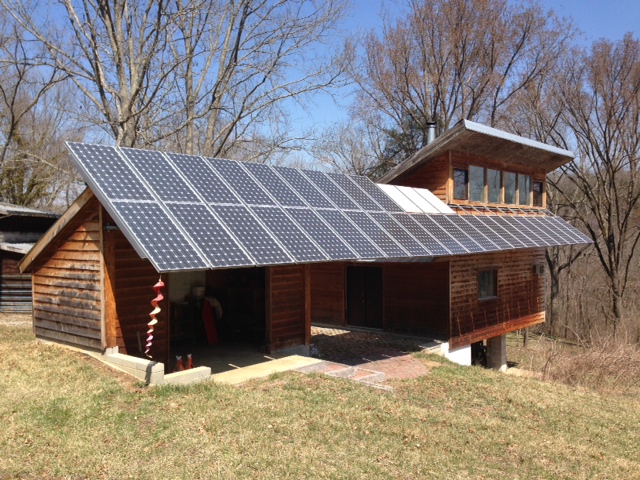




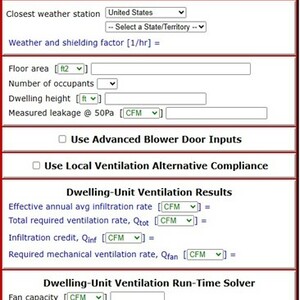
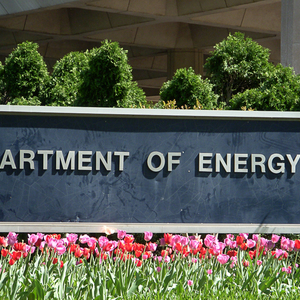
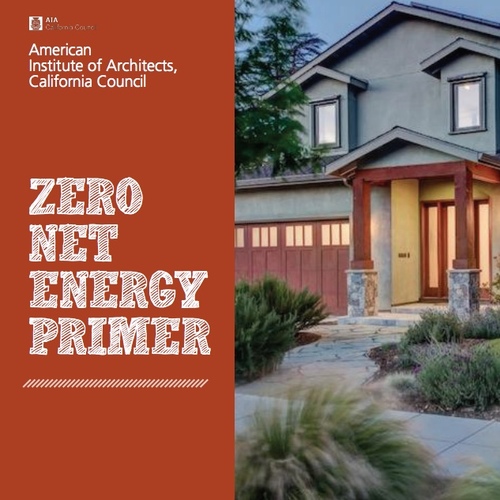
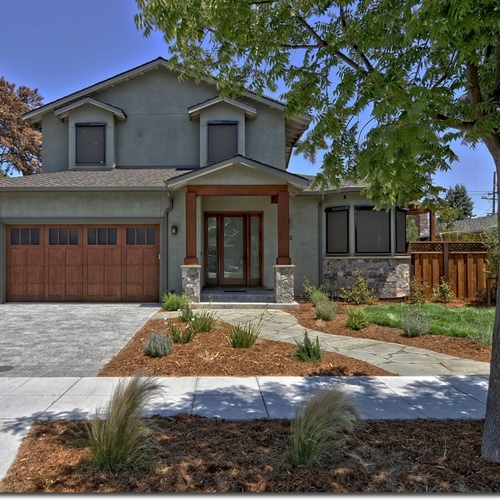






5 Comments
Just a couple Comments and a
Just a couple Comments and a Question.
In Duke territory, and presumably others, one can use net metering and reach net zero Electrical energy using PV panels; but, one cannot be compensated for PV generated power in excess of Electrical power used. There are very few people who would put those extra panels on the roof to cover minimal uses of Natural Gas energy, used in say cooking or a decorative sealed combustion fireplace, just to be able to say that their home is a "zero energy building" (ZEB). They would be expending a fair amount of money for that extra PV capacity and would be giving away that excess Electrical energy to the power company. Until power companies in general compensate PV panel owners for the excess Electrical energy they generate, I would expect to see very few ZEBs except in all electric homes. Yes, I know that I could give up that decorative fireplace, but....
In places like Wisconsin (and in Indiana, where it's being considered) where the reimbursement for all Electrical energy produced on site is at a significantly reduced rate, the use of PV panels with net metering could virtually disappear, greatly affecting the national conversion to solar power. With current net metering, I'd have to put about 1.25kW of additional panels on the roof to generate the additional Electrical energy to offset that additional expected Natural Gas use.
I'm not complaining about the justification or accuracy of the term ZEB but, like the "toothfish", "almost zero energy building" doesn't have the same ring and will be discouraging to many.
Q. I don't believe that appliances such as a decorative fireplace are included in HERS index calculations so that from a HERS point of view one can have a decorative fireplace using Natural Gas and still obtain a HERS index of ZERO, which I intend to do in a home that I'm ready to begin. But, at the same time, because of that decorative natural gas fireplace, I will not have a ZEB. HERS Zero, but not ZEB. Do I have that correct ?
Response to Ted Cummings
Ted, you are correct. The HERS Index doesn't include decorative fireplaces. It also doesn't include driveway snowmelt systems or heated garages. You could indeed have a HERS Index of 0 and not qualify as a ZEB under the DOE's new rules.
Issues with the conversion factor for electricity
I'm wondering what data set they used to come up with a national average of 3.15 source energy to consumption, and how old that set is?
In New England almost all of the 25-35% thermal coal power generation has been replaced with ~50% combined cycle gas. That power accounts for roughly half the power going onto the grid, with maybe a third of the total electricity pie going to nuclear, and another good slice going to hydro and non-hydro renewables. The quasi real-time grid mix on the ISO-NE grid is updated every 5 minutes in this chart:
http://www.iso-ne.com/isoexpress/web/charts/guest-hub?p_p_id=fuelmixgraph_WAR_isoneportlet_INSTANCE_rF2W&p_p_lifecycle=0&p_p_state=pop_up&p_p_mode=view&p_p_col_id=column-3&p_p_col_pos=2&p_p_col_count=3
Note- power generated on the customer's side of the meter only shows up as missing load in the ISO-NE snapshot. A gigawatt of rooftop solar would be real power, but doesn't appear since it's not separately metered and accounted for in real time. Commercial and utility scale wind and solar as well as landfill gas, biomass, and waste-to-energy power sources are included in the non-hydro slice.
In the Pacific Northwest it's almost all hydro, with a bit of nuclear and a growing fraction of wind, with next to zero thermal fossil burners.
These areas are nowhere near a 3.15 conversion factor, and with the rapid deployment of both wind and combined cycle gas in the midwest (including Texas) over the past decade it's unlikely that it's still a credible conversion factor there either.
In Wyoming or West Virginia where it's almost all 30-35% efficiency coal (with a few 40%+ supercritical coal plants) a conversion factor of 4-ish is perhaps credible, but where are all of the other sources that bring the national average up to 3.15? I simply don't believe it. The national grid source mix is evolving rapidly, and that conversion factor seems woefully out of date.
This is related to some of the nits to pick with PassiveHouse carbon accounting, where they go to great lengths to reduce energy use even in areas with nearly carbon-free grid, and don't discount for site-sourced energy (unless it's actually Net Zero), with the dubious assertion that those measures are reducing greenhouse gas emissions more than the embodied carbon emissions of the materials used for the last 30-50% of R value. Saving 5,000 kwh/year in Tacoma or Eugene is not at all comparable to saving 5,000 kwh/year in Casper or Wheeling in terms of lifecycle greenhouse gas emissions or source fuel energy.
I appreciate your footnoting with links but all three links were inaccessible. In quebec I doubt that mercury contamination of the water or increased earthquake risk in the St. Laurence valley have been accurately evaluated. Wood heat is also complicated depending very much on how it is produced.
Wood Heat?
How does wood heat fit into this scheme? In Maine, many people heat with wood. Wood stoves are losing favor in tight, energy efficient homes in many areas, but will probably remain popular in northern climates where it remains an inexpensive, and one could argue renewable source. What if all the wood comes from the homeowner's property? Does pv have to replace this power to remain "zero energy?
Log in or create an account to post a comment.
Sign up Log in